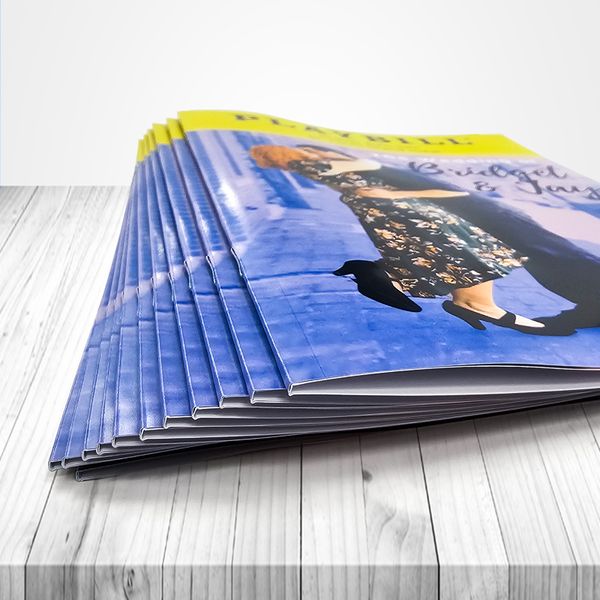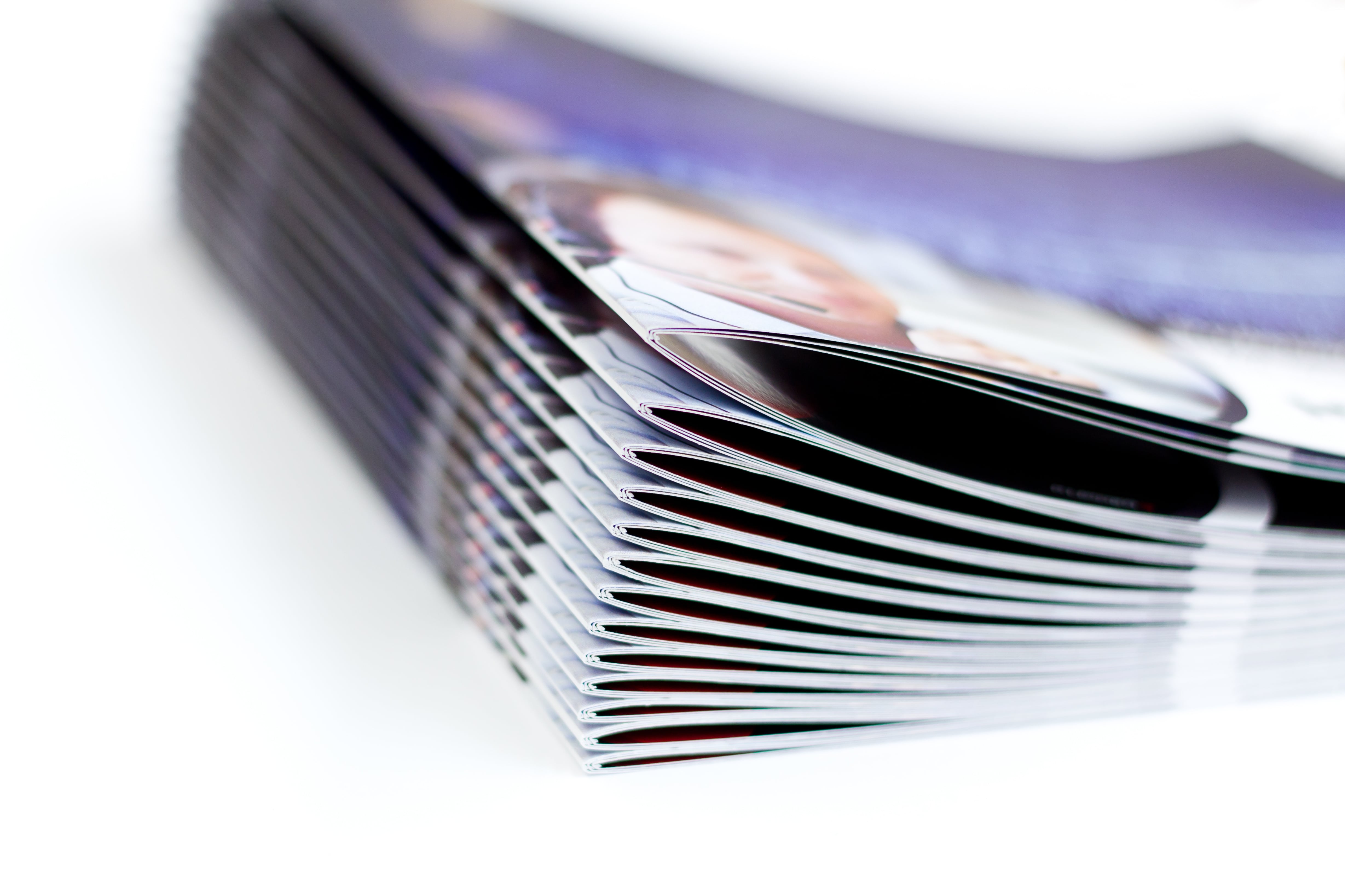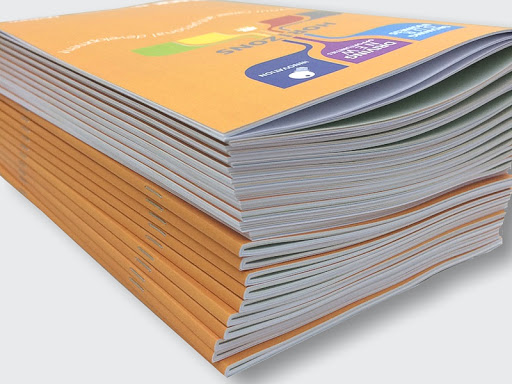Booklet Printing FAQs: Everything You Need to Know Before You Order
The Necessary Overview to Comprehending Brochure Printing Options and Techniques
The process of booklet printing entails numerous factors to consider that can considerably affect the final product. From picking the ideal style and size to understanding the subtleties of binding techniques, each choice plays a vital role. Additionally, variables such as paper supply and printing techniques more affect the efficiency of the booklet. As one browses these choices, it becomes vital to understand just how they adjoin and what that means for the total result.
Understanding Pamphlet Dimensions and styles
When taking into consideration brochure printing, understanding the numerous layouts and sizes readily available is necessary for accomplishing the wanted presentation. Pamphlets can be created in countless styles, consisting of saddle-stitched, spiral-bound, and perfect-bound, each offering unique benefits. Common dimensions range from common letter (8.5 x 11 inches) to smaller choices like A5 (5.8 x 8.3 inches), allowing for versatility based upon content and target audience.Selecting the proper size can influence both the format and reader interaction. Bigger sizes may suit visually driven material, while smaller sized formats might be more portable and straightforward. In addition, the variety of pages influences the choice of binding technique, as thicker brochures might need tougher bindings. Ultimately, recognizing these aspects enables a more customized technique, making sure that the end product straightens with the intended message and visual, boosting the general efficiency of the interaction.
Choosing the Right Paper Supply

Binding Methods: Choices and Factors To Consider
When it involves binding methods for brochures, numerous alternatives are available, each with unique benefits. Saddle stitch binding supplies a cost-efficient service for thinner brochures, while excellent binding techniques give an even more polished try to find thicker magazines. Wire-O binding stands out for its durability and simplicity of usage, making it ideal for files that need versatility.
Saddle Stitch Binding
Saddle stitch binding uses a sensible and cost-effective option for setting up pamphlets, making it a preferred selection amongst authors and organizations. This binding approach entails folding sheets of paper in fifty percent and stapling them along the fold line, developing a cool and orderly appearance. Generally suitable for booklets with a lower web page matter, saddle sewing is optimal for magazines, brochures, and instructional products. The simpleness of this method enables for quick production and is usually preferred for brief runs or marketing items. Nevertheless, it is necessary to note that saddle stitch binding might not appropriate for thicker brochures, as the spine might not stand up under enhanced weight. On the whole, it stays a trustworthy choice for many printing tasks.
Perfect Binding Methods
Perfect binding is a widely made use of method that provides a specialist and refined coating to publications and pamphlets. This technique involves gluing the pages with each other at the spine making use of a strong adhesive, enabling a tidy side and the capability to hold a larger variety of web pages compared to saddle sewing. Perfect binding is particularly ideal for thicker booklets, such as directories and annual reports, where a sturdy, flat back is desired. Furthermore, it provides the alternative for a printed cover that can be developed to boost visual charm. Considerations such as page matter, paper weight, and the planned use of the booklet ought to be taken right into account, as they can influence durability and general high quality.
Wire-O Binding Alternatives
Wire-O binding, recognized for its resilience and versatility, uses a superb option for booklets that require simple page turning and an expert look. This binding approach uses a collection of steel loopholes that hold web pages firmly, permitting them to lie flat when open. It is particularly suitable for brochures, handbooks, and presentations due to its durable nature. Wire-O binding is readily available in numerous shades and diameters, accommodating different page matters and thicknesses. Furthermore, it permits the inclusion of tabs and covers, enhancing the brochure's general aesthetic. Considerations for Wire-O binding consist of the option of cable color, the dimension of the loopholes, and the extent of customization wanted, every one of which can exceptionally influence the end product's look and functionality.
Digital vs. Offset Printing: Which Is Best for You?
When picking a printing approach for brochures, understanding the distinctions between digital and counter printing is necessary. Digital printing uses modern innovation to create top quality prints promptly and economically, making it optimal for short runs or jobs requiring fast turnaround times. It permits for personalization, providing the capacity to print on-demand with marginal waste.In contrast, counter printing is a typical technique that masters creating huge quantities with regular quality. It entails transferring ink from a plate to a rubber covering, then to the paper, which leads to exact details and lively shades. Offset printing normally calls for longer setup times and is a lot more cost-efficient for larger volumes.Ultimately, the option in between electronic and counter printing depends on project needs, budget plan, and preferred amount. For small, time-sensitive jobs, electronic may be the ideal selection, while countered may be more suitable for larger, high-grade productions.

Creating Your Brochure: Tips and Finest Practices
When creating a brochure, careful attention to layout, typeface option, and shade use can significantly enhance its effectiveness. A well-structured format overviews the visitor's eye, while suitable fonts assure readability and share the preferred tone. Additionally, effective use color can evoke feelings and emphasize essential information, making the total style much more impactful.
Picking the Right Design
How can one effectively pick the appropriate design for a booklet? Initially, it is necessary to assess the booklet's objective and target audience. A tidy, organized design enhances readability and involvement. Utilizing a grid system can assist in lining up components constantly, creating an expert appearance. Furthermore, incorporating aesthetic hierarchy with differing sizes and positionings of images and message can guide the visitor's eye and emphasize crucial details. It is likewise essential to leave sufficient white room, which prevents overcrowding and permits better emphasis. Ultimately, evaluating various layouts with mock-ups can supply insight into exactly how the style carries out in real-world circumstances, making certain that the end product fulfills both visual and functional requirements.
Selecting Suitable Font Styles
An appropriate typeface can substantially enhance the overall design of a brochure, matching the design and enhancing the web content's message. The selection of fonts ought to think about readability, particularly for body text, as it ensures the info comes to all viewers. Sans-serif typefaces are usually favored for electronic layouts, while serif typefaces can offer a typical feeling in published materials. It's recommended to limit font choices to two or 3 to keep aesthetic coherence. Furthermore, font size plays a vital duty; headings must be unique however not overwhelming, while body text should be comfy for analysis. When choosing fonts, placement with the pamphlet's style and target audience is essential for reliable interaction and aesthetic appeal.
Reliable Use Color
Shade serves as an effective tool in pamphlet style, shaping perceptions and guiding visitor emotions. It can stimulate sensations of trust fund, calmness, or exhilaration, depending on the colors picked. Designers must consider color concept concepts, guaranteeing that the picked palette aligns with the brochure's message and target market. Making use of cozy shades like red and orange can create urgency, while cooler tones like environment-friendly and blue foster tranquility.Additionally, comparison plays a vital role; complementary colors can improve readability and visual charm. Uniformity in shade use throughout web pages additionally reinforces brand name identification and communication. Inevitably, reliable shade implementation not only captures attention but also reinforces the booklet's purpose, making it a vital element of successful style.
Completing Touches: Coatings and Special Effects
While many consider the content and layout of a pamphlet one of the most essential components, the ending up touches, such as layers and special effects, play a vital function in boosting its total appeal. Coatings can give security and sturdiness, making sure that the booklet withstands wear and tear. Matte surfaces offer an innovative, non-reflective surface area, while shiny finishes can make shades appear more dynamic and attractive. Unique impacts, like embossing or aluminum foil marking, add a responsive dimension that can create a remarkable perception. These techniques can highlight details areas, attracting interest to essential details or producing visual passion. Furthermore, UV coating can give a high-shine surface that boosts the general look.Together, these ending up touches not only boost the brochure's visual however additionally interact professionalism and focus to detail, eventually leaving a lasting effect on the reader.
Expense Factors To Consider for Booklet Printing
Recognizing the additional hints various expense factors to consider for booklet printing is crucial for companies and companies intending to maximize their budgets. Trick elements affecting prices include the option of ink, paper, and binding approaches. Higher quality products, such as exceptional paper or specialized inks, typically enhance the general expenditure. Additionally, the size and page count of the brochure play a substantial role; larger booklets need even more sources and time to produce.Another vital factor to consider is the printing technique, whether digital or offset, as each has its own prices framework and viability for various amounts. Services need to additionally consider layout costs, which can vary based upon intricacy and using professional solutions. Ultimately, delivery and handling charges can contribute to the total, especially for large orders. By evaluating these elements, organizations can make informed choices that straighten with their monetary capacities while accomplishing the wanted top quality in their printed materials.
Often Asked Concerns
What Are the Environmental Impacts of Booklet Printing?
The ecological effects of booklet printing include deforestation from paper manufacturing, carbon exhausts from transportation, and waste generation from disposed of materials - Booklet Printing. Lasting techniques, such as utilizing recycled paper and environmentally friendly inks, can reduce these effects
How Can I Make Certain Shade Accuracy in My Booklet?
To assure color accuracy in a pamphlet, one must use calibrated find more info displays, utilize professional shade profiles, conduct examination prints, and select top quality printing solutions that use color matching and proofing alternatives for finest results.
What Is the Regular Turnaround Time for Booklet Printing?
The normal turnaround time for pamphlet printing varies depending on the intricacy and quantity - Booklet Printing. Normally, it ranges from a couple of days to two weeks, affected by factors such as publishing methods and ending up demands
Exist Minimum Order Quantities for Brochure Printing?

Can I Print Pamphlets in Numerous Languages?
Publishing booklets in multiple languages is possible. Lots of printing solutions supply options for multilingual or bilingual designs, enabling reliable communication. Mindful preparation guarantees that design elements fit different languages without jeopardizing readability or aesthetics. Additionally, elements such as paper stock and printing techniques further affect the efficiency of the pamphlet. When taking into consideration pamphlet printing, recognizing the numerous layouts and dimensions available is important for accomplishing the desired presentation. When selecting a printing method for pamphlets, recognizing the distinctions in between digital and offset printing is important. Additionally, the size and web page matter of the brochure play a significant role; bigger pamphlets need more resources and time to produce.Another vital factor to click to find out more consider is the printing method, whether digital or offset, as each has its very own prices structure and viability for various quantities. The ecological influences of brochure printing include logging from paper manufacturing, carbon emissions from transport, and waste generation from disposed of materials.